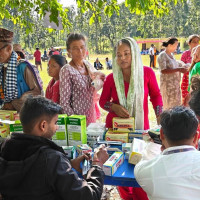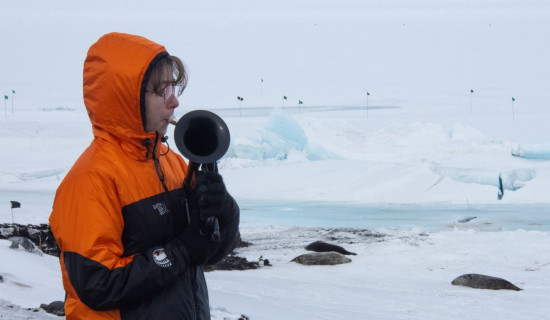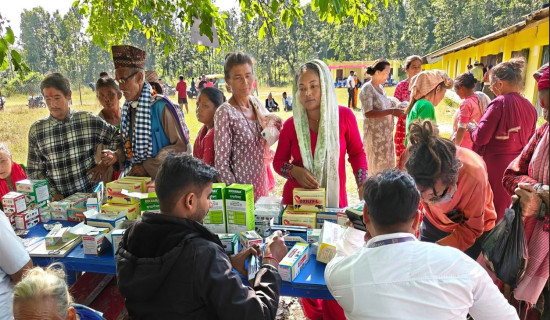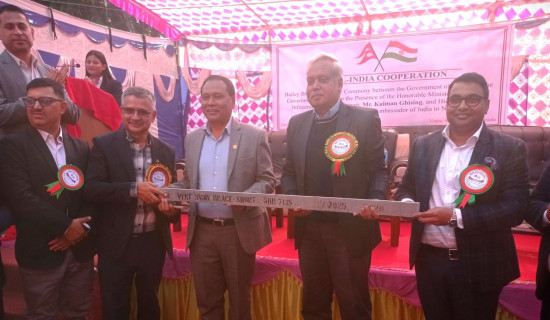- Friday, 21 November 2025
Protecting The Biosphere Reserves
Biosphere reserves are areas specifically protected under UNESCO’s Man and Biosphere (MAB) programme. They include terrestrial, marine and coastal ecosystems and fall under the jurisdiction of the countries where they are located. The MAB programme is an integrated scientific initiative designed to strengthen the relationship between man and the environment. Biosphere reserves are designed to protect the environment, harness natural resources and cement man-environment interactions and relationships. They are a learning place where people are educated about life-supporting systems consisting of air, water, soil and living organisms.
The basic thrust of biosphere reserves is to strengthen the bond between man and the environment, beef up global natural ecosystems and accelerate sustainable development. There is a need to save water, natural resources and living organisms. These are components of the biosphere. The biosphere is where life exists or is possible. For a sustainable life, natural resources are a must. The biosphere includes water bodies, part of the lower atmosphere and part of the upper lithosphere. Natural resources are concentrated in the biosphere. Biosphere reserves aim at promoting harmony between man and nature by means of research, education, community participation and sustainable socio-economic development.
Over-exploitation
At a time when natural resources are depleting fast owing to over-exploitation or other factors, the importance of biosphere reserves is growing day by day. Sustainable use of the biosphere is possible through biosphere reserves. Unlike strictly protected areas, biosphere reserves are designed as models of socio-economic development and conservation of the environment and natural resources. They are centres of research and education aimed at carrying out sustainable socio-economic activities, involving local communities. Local communities have indigenous knowledge, which can be harnessed to preserve the environment. Biosphere reserves can help understand and manage relationships between social and ecological systems, mitigate man-environment conflict and boost biodiversity. They offer local solutions for global challenges.
Biosphere reserves are found in 193 biogeographical zones. There are 785 biosphere reserves in 142 countries. They cover over eight million square kilometres, which is equivalent to Australia, and directly benefit around 300 million people living within these reserves. Since 1971, biosphere reserves have been playing a crucial role in UNESCO’s environmental mission. Since 2018, 142 new biosphere reserves have brought an additional one million square kilometres of natural areas under their fold. Together with World Heritage Sites and Global Geoparks, biosphere reserves protect over 13 million square kilometres of terrestrial and marine ecosystems under UNESCO’s fold.
An area of 4.1 million square kilometres, equivalent to the Mediterranean Sea, has already been safeguarded by UNESCO through biosphere reserves, World Heritage Sites and marine geoparks. Biosphere reserves may also contribute to meeting the global Kunming-Montreal target of conserving 30 per cent of land and the sea by 2030. The BBNJ (Biodiversity Beyond National Jurisdiction) Treaty, also called the High Seas Treaty, allows countries to designate and manage protected areas in the high seas by adopting scientific methods and formulating sound management plans. Biosphere reserves preserve a significant portion of global biodiversity: over 60 per cent of terrestrial vertebrates, 12 per cent of mapped mangroves, 10 per cent of salt marshes and eight per cent of seagrass meadows.
It may be noted that the 37th session of the International Coordination Council of the MAB programme held in Hangzhou, China, from September 26 to 28, 2026, decided to designate 26 biosphere reserves in 21 countries. During the session, achievements of the MAB programme were reviewed and an action plan, including studying the effects of climate change, was charted for the coming decade. Audrey Azoulay, the Director General of UNESCO, invited every member state to set up at least one biosphere reserve by 2035. The World Network of Biosphere Reserves has notched up a breakthrough: five per cent of the planet has been brought under protection.
It would be pertinent to mention Nepal regarding biosphere reserves. The country is rich in natural resources and biodiversity. The country is extolled all over the world for its conservation efforts and successes. There are many sanctuaries, buffer zones and national parks. Chitwan National Park and Sagarmatha National Park are listed as World Heritage Sites. Twenty-three per cent of the total land is under protection. However, there is not even a single biosphere reserve designated in the country.
However, there is good news that Nepal is actively working to have the Kanchenjunga Conservation Area (KCA) designated as its first biosphere reserve under the MAB programme. The KCA is taken as a strong candidate. It is located at an intersection of Nepal, Sikkim and parts of China. The KCA is home to the second-highest mountain in South Asia and a crucial area for biodiversity in the Eastern Himalayas. Extensive stakeholders’ engagement and policy alignment are necessary to succeed in getting the KCA enlisted in the World Network of Biosphere Reserves. However, it is gratifying to note that UNESCO and local partners are supporting the country’s endeavour.
Community-based approaches
Meetings have been held with government officials, conservation experts and local stakeholders to hold deliberations on policy, community engagement and best practices for the smooth operation of the proposed biosphere reserve, with a focus on community-based approaches for nomination and operation. Nepali delegations have also visited existing biosphere reserves like the Khangchendzong Biosphere Reserve in India to gain insight into how it is running and also to forge regional cooperation with our neighbouring country.
Saving the biosphere is one of our major concerns. It is incumbent upon us to save the biosphere for our future generations. For this, the capacity of local communities needs to be built. They should also be educated about the environment. A combination of indigenous and scientific knowledge will certainly pay. Conservation groups may also be formed in collaboration with knowledgeable people or institutions for better results. It is hoped that Nepal will soon see the KCA designated as a biosphere reserve.
(Maharjan has been regularly writing on contemporary issues for this daily since 2000.)














